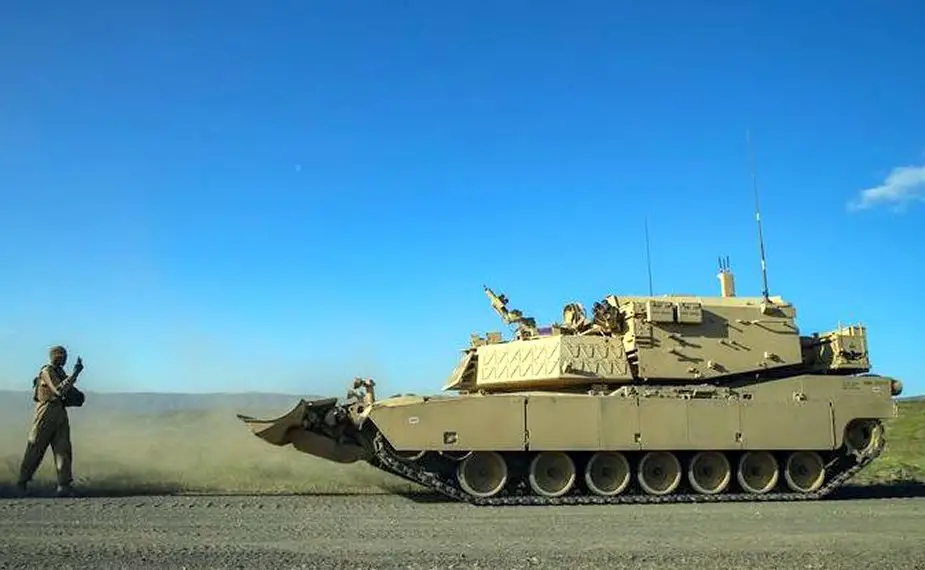Remotely controlled M1A2 Abrams Main Battle Tank tested
A new unmanned version of the M1A2 Abrams main battle tank recently underwent testing in Yakima, Washington, Kyle Mizokami reports on Popular Mechanics. The Robotic Complex Breach Concept (RCBC) vehicle was designed to clear minefields and battlefield obstacles ahead of a ground assault.

RCBC during the Joint Warfighting Assessment, without reactive armor boxes on the superstructure (Picture source: USMC/Lance Cpl. Nathaniel Q. Hamilton)
When the U.S. Army developed a new vehicle designed to literally blast and plow its way through enemy defenses, the M1150 Assault Breacher Vehicle, it decided only the M1A2 Abrams main battle tank was resistant enough to survive on the front line. The Assault Breacher Vehicle removes the vehicle’s turret and main gun and instead adds a mine plow, dozer blade, ordnance removal charges, and an explosive mine-clearing system.
The ABV can plow through wire barriers, fill trenches, blow a lane through minefields with a rocket-propelled linear explosive charge, and smash anti-tank barriers. The ABV increases protection versus anti-tank rockets and missiles with reactive armor boxes bolted to the superstructure.
A new vehicle, the Robotic Complex Breach Concept vehicle (RCBC) takes the M1150 Assault Breacher Vehicle and makes it work without a human crew, the vehicle being remotely operated by a soldier. The Assault Breacher Vehicle was already wired with a full suite of outward-facing cameras to allow soldiers inside the vehicle to do their job, so these cameras were probably just linked to a wireless networking system. A remote steering and equipment operation system was added to the vehicle and the ABV became the RCBC.
The RCBC is currently undergoing testing by the US Marine Corps at the Yakima Training Center, Kyle Mizokami reports. The JWA is a field exercise where the U.S. Army and U.S. Marine Corps are testing future technologies for possible deployment, including robotic technologies which are to be considerably developed, especially since one of the requirements for the Army’s M2 Bradley replacement is the ability to operate unmanned.
Incidentally, electromagnetic interference from the JWA is so strong it is affecting older garage door remote controls in nearby communities.


























